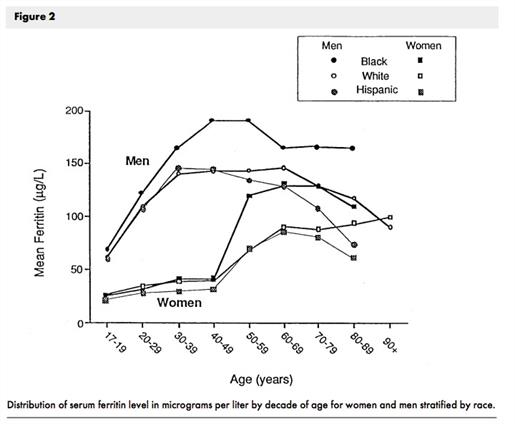FIRST THING TO DO FOR CANCER: CUT YOUR IRON-Part 1
April 1, 2019 | Author: Neal Greenberg, CHCC
Cutting Iron is one of the most important non-invasive treatments for cancer: it includes not smoking, eating a plant- based diet, and blood donation.
Contrary to conventional wisdom, most people have too much iron; few have too little. 94% of us have too much iron. In a study of 20,000 women over 19 years, more iron supplements meant a higher death rate(1 ). We get too much iron from meat (including fish) cigarettes, and
fortified foods. Cutting out meat and cigarettes and donating blood can have enormous benefits. Eating vegetables slows iron uptake into the body(2) while meat consumption accelerates it. Iron is linked with most forms of cancer because iron forms free radicals at an incredibly fast rate via the “Fenton reaction”(3). This process is called “oxidation”, exactly as rust on an old car is called “oxidation”. High iron equals more cancer(4) and more death. In one study, those with the highest levels of iron were associated with 3 times more cancer deaths!(5) Yet we all need iron to transport oxygen in our body in the form of hemoglobin. The excess iron is stored in a molecule called ferritin. Too much ferritin in your blood, appears to be linked to cancer and lower life expectancy. A study of 8000 people in Denmark over 23 years showed that the higher your ferritin, the shorter your life(6) and much of the shortened life expectancy comes from cancer. The chart shows that you lose about 3 years for each level of iron, until the highest level chops about 18 years off your life from increased cancer and heart disease.
FERRITIN: AVERAGE AGE AT DEATH
0-200 79
200-400 76
500-600 73
600+ 55
IRON PROMOTES CANCER IN THREE WAYS:
Iron causes damage by generating free radicals which cause mutation, chromosome damage and cell proliferation. Then iron suppresses our own body’s ability to destroy cancer cells, called “apoptosis”. Finally, iron is an important nutrient for feeding the spread and growth of cancer(7).
LOWERING IRON LEVELS REDUCES CANCER:
Dr. Leo Zacharski took 1200 patients that had a disease of clogging of arteries. Half the group lowered their iron through BLOOD DONATIONS. The other half continued as normal. After 5 years, the IRON LOWERING group had 35% fewer cancers and 61% fewer deaths from cancers(8).
In another study, 2 blood donations per year was associated with 36% lower rate of death(9).
SMOKING DOUBLES IRON LEVELS:
A pack of cigarettes has about 10mg of iron(10) (11). We normally eat about 10 mg per day from our food. So, cigarettes double our iron ingestion. Long term smokers and even ex-smokers have about twice the ferritin levels of non-smokers(12). Why ex-smokers? Because our kidneys don’t remove iron. So once iron is in you, it stays a long time.
You can detect lung cancer just by measuring the iron in your breath moisture(13) (14).
CONCLUSION: Dr. Zacharski, a famous expert on this topic agreed with me when I proposed that the biggest toxin in cigarettes is iron. SO STOP SMOKING.
MENOPAUSE CAUSES A MAJOR SPIKE IN IRON:
Since the only means of removing iron, monthly when women stop their periods, their iron levels go way up(15).

Women’s iron levels go up during menopause, when their period stop.Men’s go up from age 17-40 which might explain why their cancer rates are higher at a younger age.
VEGETARIANS HAVE MUCH LOWER IRON LEVELS:
Vegetable consumption decreases the availability of iron to go into your body. Meat eaters have much more iron uptake as meat-based iron-called “heme-iron” is more easily taken into your body. So, eating vegetables slows down the uptake of iron. Vegetarians in one study had about ½ the ferritin levels of meat eaters(16).
AVOIDING FORTIFIED FOODS:
Junk or processed food is unhealthy, as many of us know. But many processed foods have added iron. The iron was added because in the 1940s, studies mistakenly overestimated iron-deficiency according to Dr. Zacharski.
GO TO PART 2: In part 2, we will explore what to do, what levels are safe, and how iron is linked to skin aging.
[Warning:This is not medical advice, and no treatment should be done without the advice of medical professionals. Note that measuring iron levels is much more complex than ferritin measurements, as some iron as ferritin can be sequestered in various organs and ferritin can go up during inflammation]
Join the conversation. Create a topic in our forum.
[1] Mursu J, Robien K, Harnack LJ, Park K, Jacobs DR, Jr.: Dietary supplements and mortality rate in older women: the Iowa Women’s Health Study . Archives
of internal medicine 2011, 171 (18):1625-1633.
[2] Many phytochemicals such as phytic acid are natural chelators, and bind the iron which impedes its uptake into the body.
[3]Curr Med Chem. 2005;12(10):1161-208. Metals, toxicity and oxidative stress. Valko M1, Morris H, Cronin MT.
[4] Nat Rev Cancer. 2013 Epub 2013 Apr 18. Iron and cancer: more ore to be mined. Torti SV1, Torti FM.
[5] Total and Cause-Specific Mortality by Moderately and Markedly Increased Ferritin Concentrations: General Population Study and Metaanalysis Christina Ellervik, Jacob Louis Marott, Anne Tybjærg-Hansen, Peter Schnohr, and Børge G. Nordestgaard. Clinical Chemistry. 2014.
[5] Total and Cause-Specific Mortality by Moderately and Markedly Increased Ferritin Concentrations: General Population Study and Metaanalysis Christina Ellervik, Jacob Louis Marott, Anne Tybjærg-Hansen, Peter Schnohr, and Børge G. Nordestgaard. Clinical Chemistry. 2014.
[6] Ibid.
[7] Zhe Feng, Ji-Wei Chen, Jian-Hua Feng, Fei Shen, Wen-Song Cai, Jie Cao, Bo Xu The association between serum ferritin with colorectal cancer. 2015 Int J Clin Exp Med
[8] Zacharski LR, Chow BK, Howes PS, Shamayeva G, Baron JA, Dalman RL, Malenka DJ, Ozaki CK, Lavori PW: Decreased cancer risk after iron reduction in patients with peripheral arterial disease: results from a randomized trial. Journal of the National Cancer Institute 2008,
[9] In this study, they made a crude estimate of the “healthy donor affect” assuming that if people lose their health they stopped donating. This reduced
the effect from 18% per donation per year, to about 7%. Nonetheless, they found that this adjustment may not have been necessary. Source: Ullum H, Rostgaard K, Kamper-Jorgensen M, Reilly M, Melbye M, Nyren O, Norda R, Edgren G, Hjalgrim H: Blood donation and blood donor mortality after adjustment for a healthy donor effect. Transfusion 2015, 55(10):2479-2485.
[10] Herman M, Koscielniak, P.: Analytical evaluation of the iron transfer from cigarette tobacco to human body. NUKLEONIKA 2004, 49:S39-S42.
[11] Ghio AJ, Hilborn ED, Stonehuerner JG, Dailey LA, Carter JD, Richards JH, Crissman KM, Foronjy RF, Uyeminami DL, Pinkerton KE: Particulate matter in cigarette smoke alters iron homeostasis to produce a biological effect. American journal of respiratory and critical care medicine 2008, 178(11):1130-1138.
[12] Lee CH, Goag EK, Lee SH, Chung KS, Jung JY, Park MS, Kim YS, Kim SK, Chang J, Song JH: Association of serum ferritin levels with smoking and lung function in the Korean adult population: analysis of the fourth and fifth Korean National Health and Nutrition Examination Survey. International journal of chronic obstructive pulmonary disease 2016, 11:3001-3006.
[13] Carpagnano GE, Lacedonia D, Palladino GP, Koutelou A, Martinelli D, Orlando S, Foschino-Barbaro MP: Could exhaled ferritin and SOD be used as markers for lung cancer and prognosis prediction purposes? European journal of clinical investigation 2012, 42(5):478-486.
[14] Ashmawi SS, Diab, H.S., Fahmy, E.A.: Evaluation of lung cancer by estimating ferritin in exhaled breath condensate. Egyp J Chest Dis Tubercul 2015, 64:465-468.
[15] Association of age, sex, and race with body iron stores in adults: Analysis of NHANES III data Leo R. Zacharski, MD, Deborah L. Ornstein, MD, Steven Woloshin, MD, and Lisa M. Schwartz, MD White River Junction, Vt, and Hanover, NH
[16] Hua NW, Stoohs RA, Facchini FS: Low iron status and enhanced insulin sensitivity in lacto-ovo vegetarians . The British journal of nutrition 2001, 86 (4):515-519.
 Neal Greenberg, CHCC
Neal Greenberg, CHCC
Certified Nutrition Educator | Authorized Meditation Teacher | Medical Researcher | Conventional and Alternatives Expert | Expert in ancient Tonglen meditation
917-848-9317
